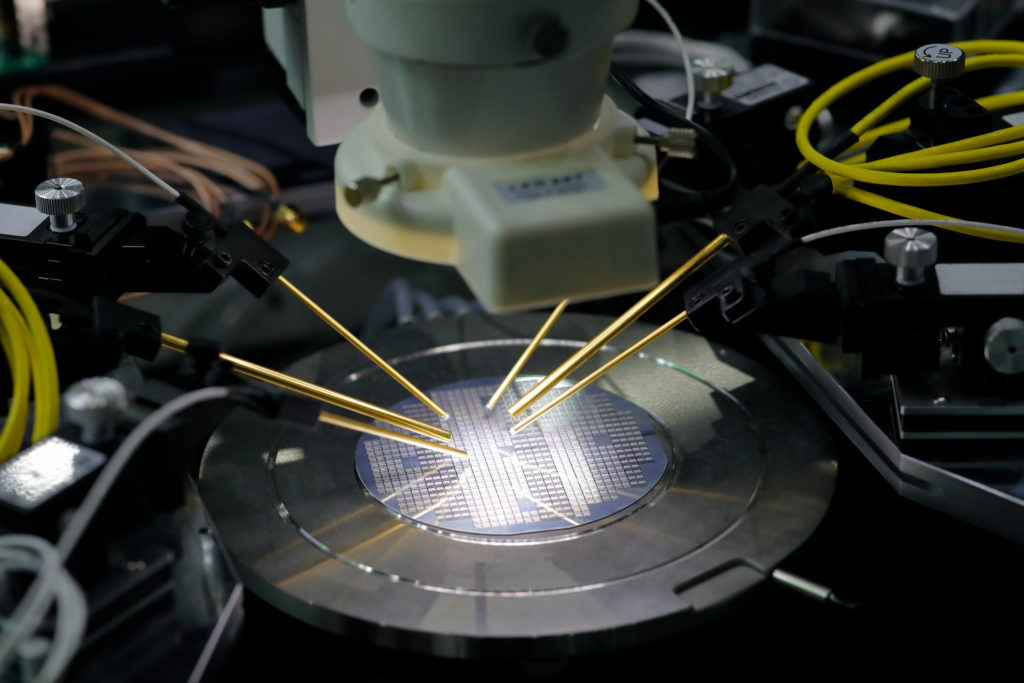The Biden Administration Says No Chips for China, and It’s a Huge Deal
Share

It’s a shift in the use of export controls not seen since the Cold War, say the experts.
The Biden administration on October 7 announced new unilateral restrictions on sales of super-specific, high-end semiconductors and semiconductor technology to China. They are “the most stringent controls by the U.S. government on technology exports in decades,” as described in the New York Times, meant to hamper China’s growth in super high-tech manufacturing sectors for reasons of U.S. national security.
American companies are no longer allowed to sell advanced computing chips or chip-making equipment to China without a license … and the administration says it’s not gonna be easy to get a license.
But keep your fork, there’s pie: The administration “also imposed broad international restrictions that will prohibit companies anywhere in the world from selling chips used in artificial intelligence and supercomputing in China if they are made with U.S. technology, software or machinery,” wrote the Times when the rules were announced. This is another iteration of the foreign direct product rule, which was last used by the Trump administration when it went after Chinese telecommunications giant Huawei.
So why is the administration doing this now? The answer, in short, is China is catching up. Its government commands a burgeoning economy, soon to be the world’s largest, and has eyes on global technological dominance. But at the absolute pinnacle of industrial technology, it still relies on chips and technology designed and built by companies outside its borders. It gobbles these things up; there’s a huge market in China for them. And so China has poured money into developing its own semiconductor industry to end this reliance.
And, simply put, the Biden administration doesn’t think U.S technology should help China bridge its gaps in the meantime. It wants those gaps to remain. And here’s why, as one analyst put it: “An exoscale computer can run meteorology and climate models. They can also run ballistic tests.”
And so we’ve got these restrictions, which were rolled out after consultations with allies but without their direct buy-in.
These rules are being understood as a significant shift in how the U.S. government looks at using export controls. Back during the Cold War, they were used strategically: Keep high-end tech and equipment out of the hands of the Soviet Union to maintain a high ground. That state-specific approach largely went away in the three decades since the USSR’s collapse and in the years since, explains Scott Wolf, an expert on export controls who was a Commerce Department official during the Obama administration. “They were overtly not focused on specific countries,” he said. But that’s over and done with:
What changed, frankly, is China’s technology acquisition policies, [including] acquiring commercial technologies in order to help modernize its military, the use of a state policy of achieving strategic economic dominance in key sectors for the economy that are also critical for the modernization of a military, [and] the use of commercial items to commit human rights abuses.
This has caught many companies off guard, and the industry is scrambling to rearrange itself so that its businesses in China don’t run afoul of these new bans. But while it would be asking a lot to expect anyone to have seen these restrictions coming, the administration did basically say they were in the offing. Here’s U.S. National Security Advisor Jake Sullivan in a speech last month.
Our competitors are using increasingly sophisticated means to illicitly acquire sensitive technologies, information, and know-how, and we must adapt accordingly.
On export controls, we have to revisit the longstanding premise of maintaining “relative” advantages over competitors in certain key technologies. We previously maintained a “sliding scale” approach that said we need to stay only a couple of generations ahead. That is not the strategic environment we are in today.
Given the foundational nature of certain technologies, such as advanced logic and memory chips, we must maintain as large of a lead as possible.
Sullivan continued with an example:
Earlier this year, the United States and our allies and partners levied on Russia the most stringent technology restrictions ever imposed on a major economy. These measures have inflicted tremendous costs, forcing Russia to use chips from dishwashers in its military equipment.
This has demonstrated that technology export controls can be more than just a preventative tool. If implemented in a way that is robust, durable, and comprehensive, they can be a new strategic asset in the U.S. and allied toolkit to impose costs on adversaries, and even over time degrade their battlefield capabilities.
It’s been about ten days since the restrictions were announced, and consensus opinion now considers them a huge deal. “No Possibility of Reconciliation” ran a headline in Bloomberg. And they’re certainly not being received well by the Chinese government.
But … will they work? Well, that will likely come down to whether the U.S. can bring along partners to enforce a ban on what is, at its roots, a commercial ban. And remember, China is a huge market for these kinds of semiconductors and for semiconductor-making equipment.
“In the short term, [these regulations] will absolutely be effective and have the desired effect of the US government, said Wolf, the export controls expert. “But over a much longer period of time non-US companies — if they’re not subject to the same controls in the producer nations — will fill the gap.
“I think it’s really going to be a function of how persuasively, and [with] how much evidence, the US government presents at very senior levels to the allied governments about the non-classical threat that is China, with respect to the need to regulate inherently commercial items.”
